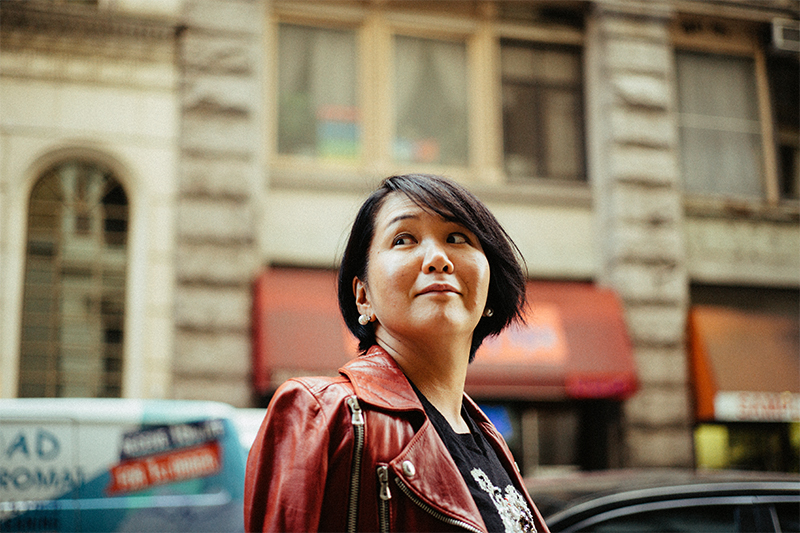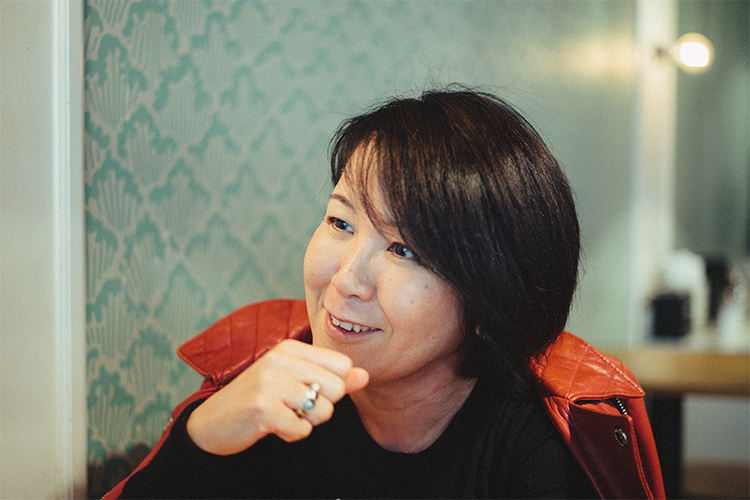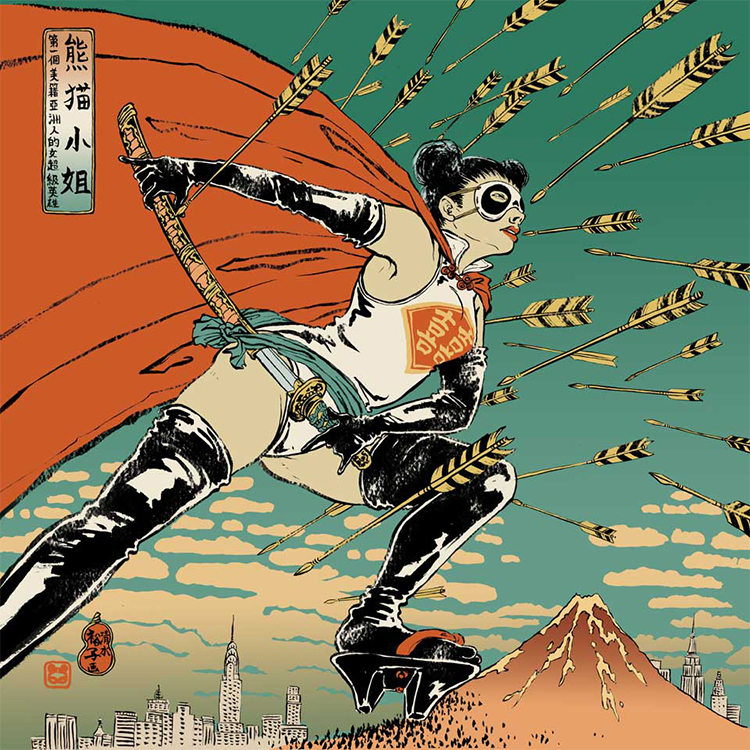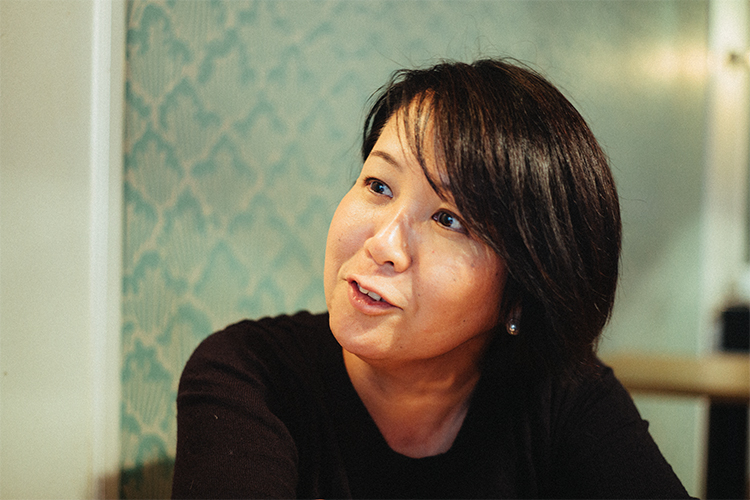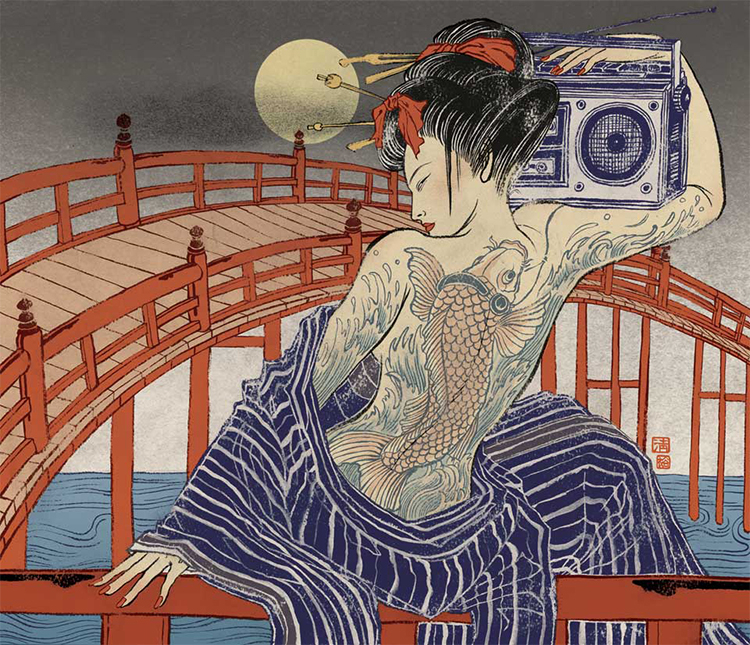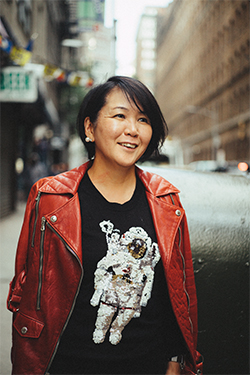学校で学んだことは、人生について
At school, I learned about LIFE
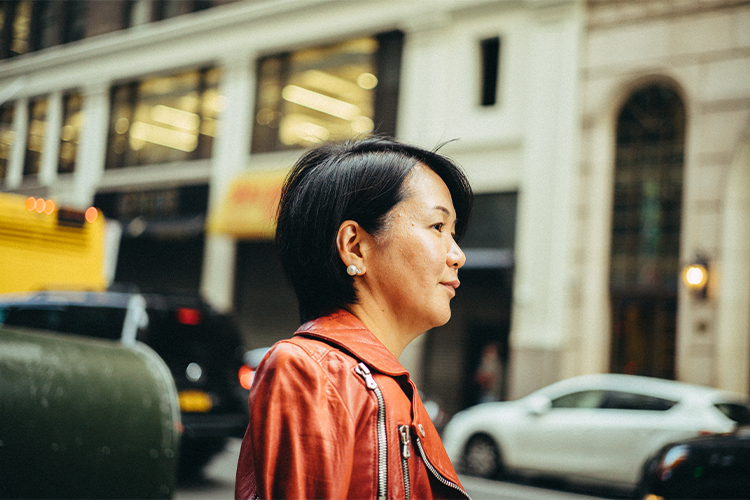
―SVAではどんなことを学んだのか教えてください
―What kind of things did you learn about at SVA?
ひと言で表すなら、人生についてですね。デッサンも油絵もコンピューターのことも学んだけれど、それは枝葉の話。大切なのはもっと哲学的なことで、ギャラリーに行ってはどの絵が良くて悪いのか? どの絵が好きなのか嫌いなのか? 自分の眼を養って、果てはそのことについて友人とディスカッションする。なぜ? どうして?? っていう理由を明確にして自分の考えを主張することはアメリカで生き抜いていくうえでとても大切なこと。片や日本でクリエイションになにを求められるかといえば、空気感だと日本から来たイラストレーターに教えられたんですよ。アメリカでは絶対にあり得ないこと。すべてはコンセプトから始まるし、コンセプトからアイデアが生まれる。
In simple terms, I learned about life. I learned about design, oil painting and computers, but those were all on the periphery. What was important were the philosophical things, such as when you visit a gallery, what pictures are good or bad? What kind of pictures do you like or hate? I would take everything in and then discuss it with my friends. Why? How? Being able to explain your reasons and voice your opinion are an important part of surviving in America. In contrast, an illustrator visiting from Japan told me that in Japan, creation requires an atmosphere or ambience. That's completely out of the question in America. Everything starts with a concept and from that concept an idea is born.
―でも当然SVAで技術は研磨されたわけですよね?
―However, didn’t SVA also help to refine your skills?
当時も今も技術的なことを言えば私は下手だって思ってるんです。美大の授業はある意味ブラックボックス。開けてしまえばそこにあるのは誰でも学べることばかり。だからこそさっき言ったようなもっと根源的なことがとても大切。SVAで1年生の学期末、プロのアーティストである先生から“好きなものを描いていい”っていう課題があったんです。その先生にはスケッチブックに描いた漫画みたいな落書きを見られて、そういうのを描けなさいって。私は先生に、“これはポップカルチャーに影響された漫画なだけであって、アートじゃない。日本でもみんなにそう言われた”って伝えたんですけれど、彼女はそれを続けるように勧めてくれた。さらには“いったい誰がそんなことを言ったの?”とも。プロのアーティストとして言うけど、これはあなたのつくったアート。自分に自信を持ちなさい!って、私の背中を押してくれました。
At that time, and even now, I'm not very good at technical things. The classes at art school are kind of like a black box. Once it's open, you can learn as much as you want. For that reason, and as I mentioned earlier, the more fundamental things are very important. During my first year at SVA, the teacher, who was also a professional artist, set an end of semester assignment where we could draw whatever we liked. She saw my manga looking doodles in my sketchbook and told me to paint something like those. I told her “this is not art, this is just manga inspired popular culture. Everyone in Japan told me it’s not art”. She encouraged me to go with it. She also questioned who said it’s not art? She said “I am a professional artist and I call this your art. Be confident with who you are”.
―卒業後日本人である自分にアドバンテージを感じたことは?
―After graduating, did you feel that being Japanese gave you an advantage?
アメリカ人は私のイラストを日本的だと言ってくれるし、反対に日本人は外国人っぽいと言うけれど、そもそも日本のことがちゃんと分かって、英語でコミュニケーションがとれて、ちゃんとコンセプトを伝えてくれる日本人イラストレーターが少ないんでしょうね。いま日本人って海外に出ていかなかくなってしまっているでしょう。世界はどんどんグローバルになっているのに逆のベクトルに向かっている日本はとても心配ですよ。特に若い人はもっと外に出ていかないといけないと思います。
American people say that my illustrations are Japanese. At the same time, Japanese people say they look like the work of a foreigner, but I don’t think there are many Japanese illustrators who truly understand Japan, can communicate in English and properly convey their concept. These days Japanese people have stopped going abroad. The world is becoming more global, but it's worrying that Japan is heading in the opposite direction. I think that young people in particular need to venture out more.
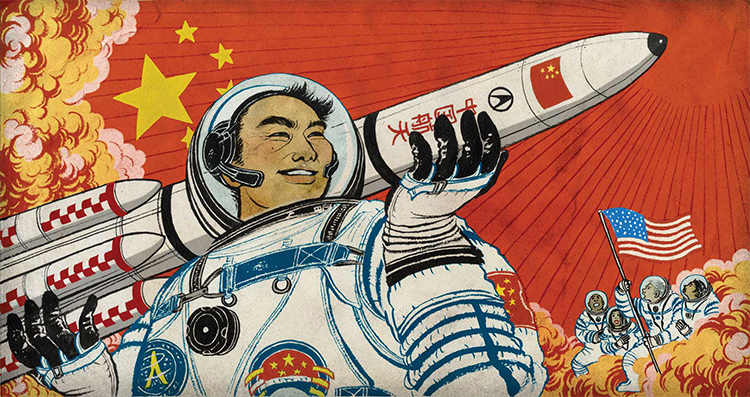
China’s Race to Space Domination,
an opener illustration and hand-lettering done for Popular Science Magazine,
October 2016 issue

